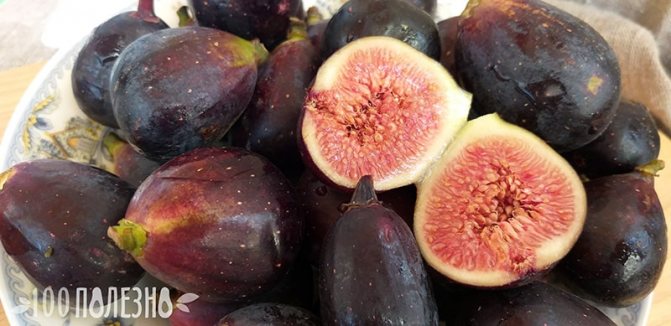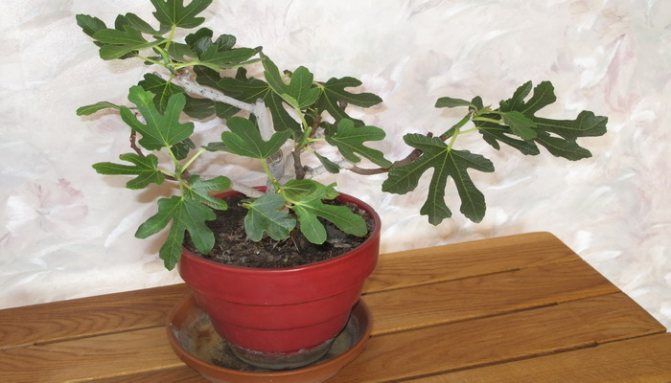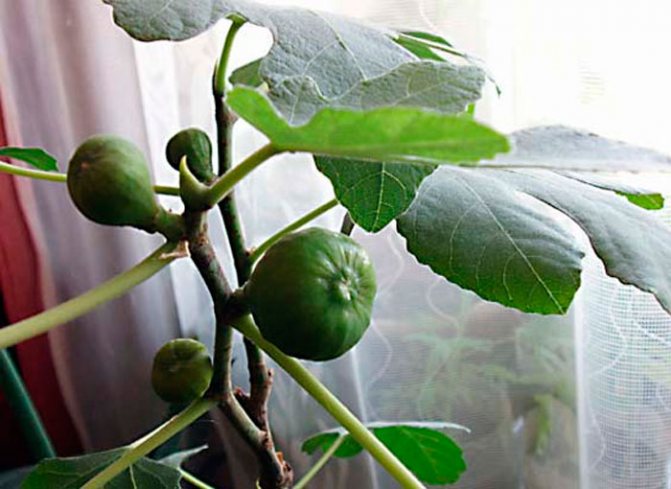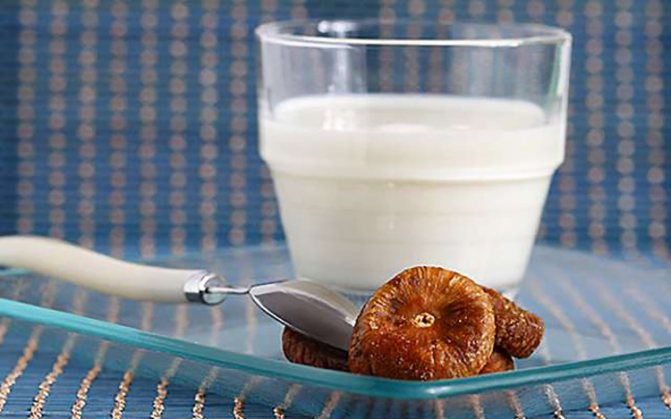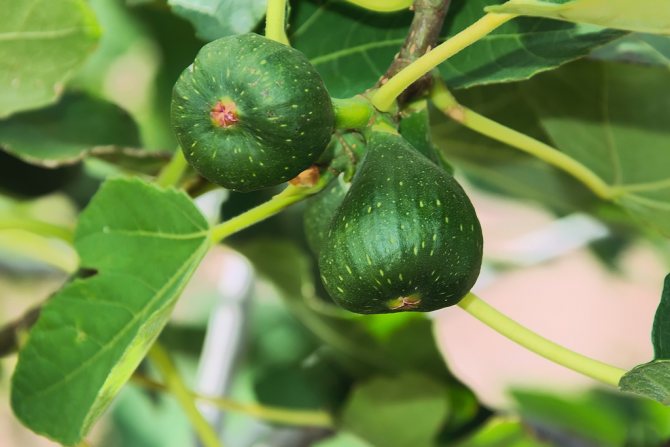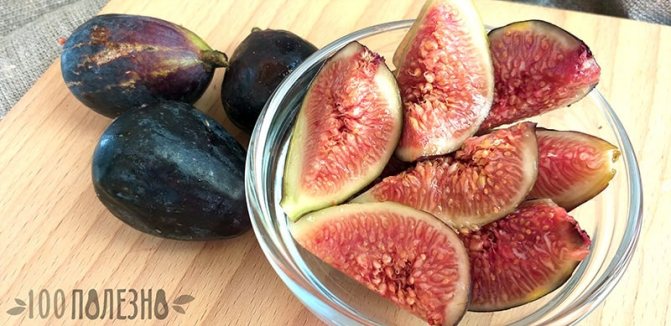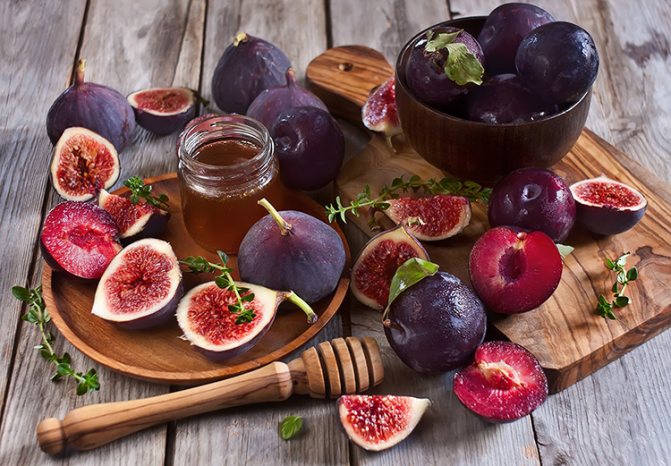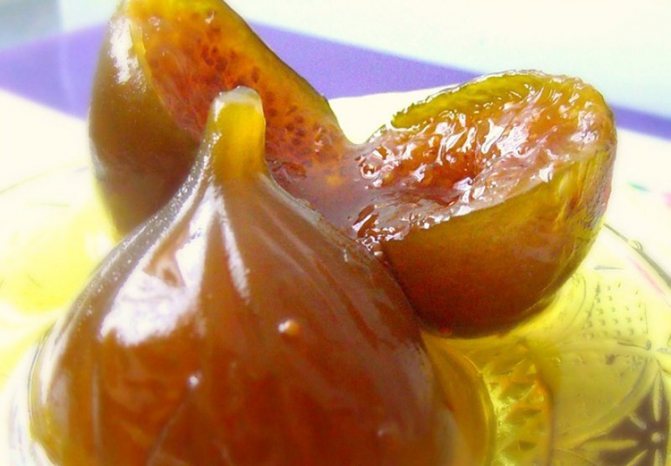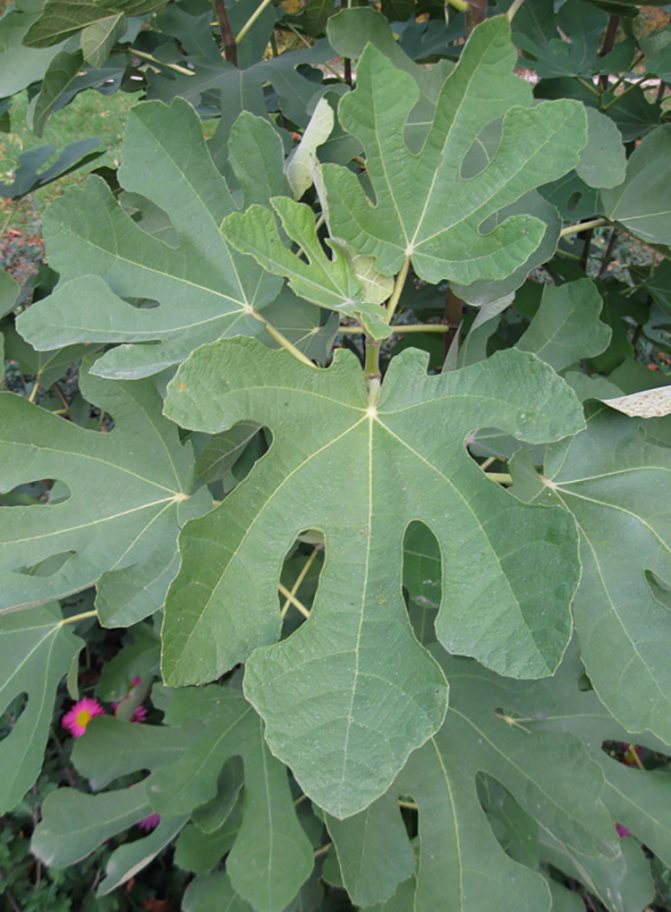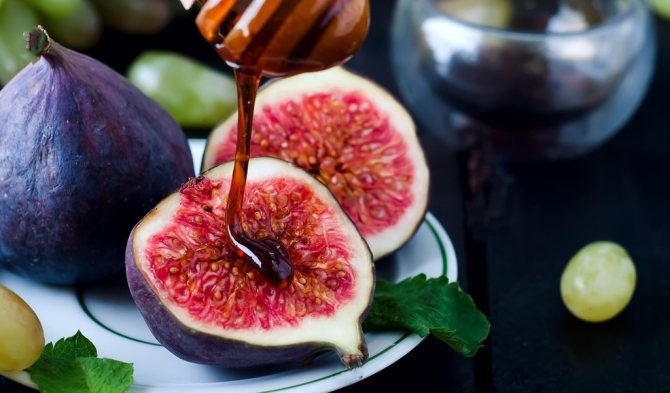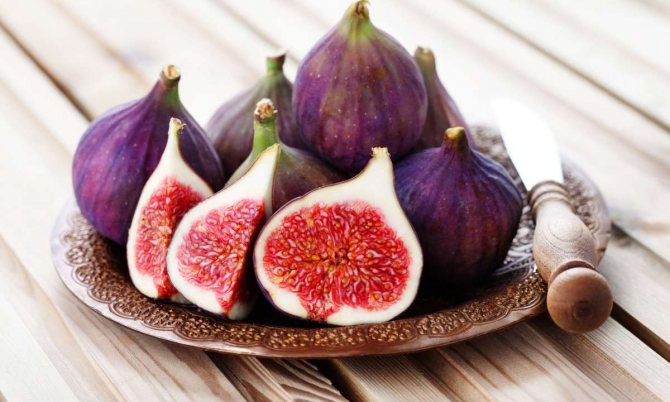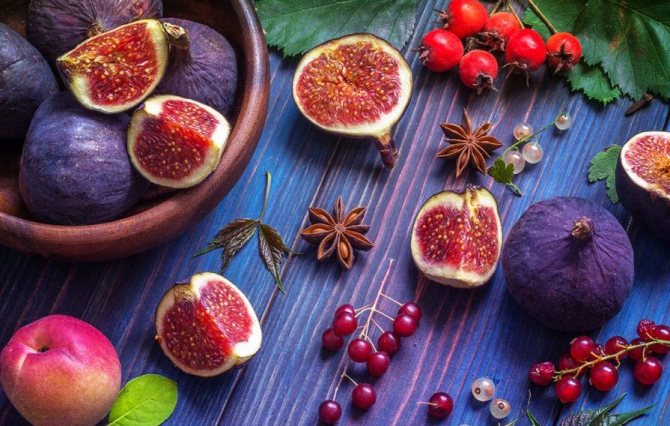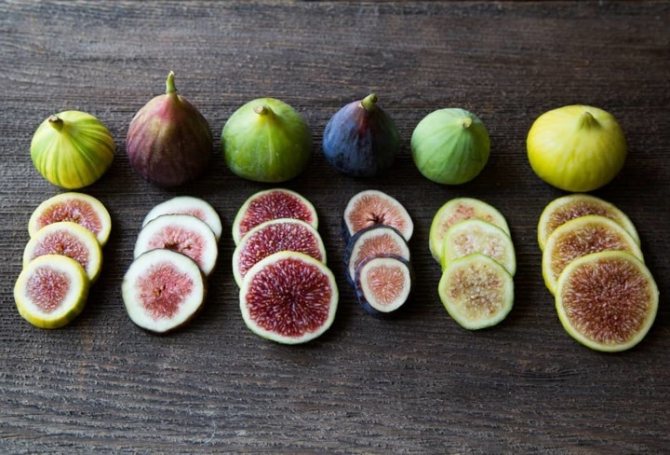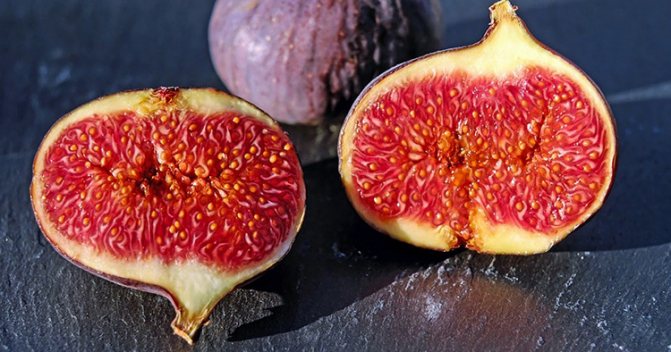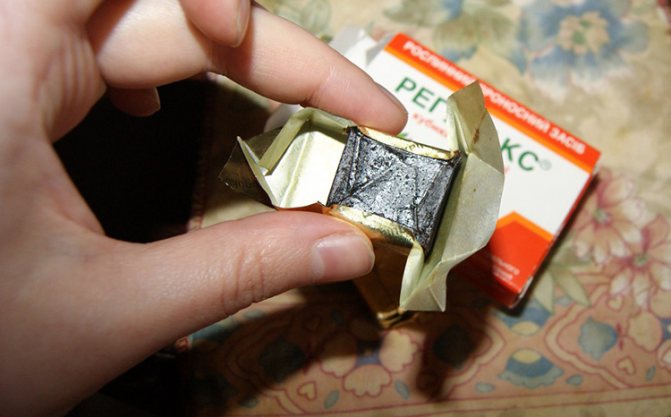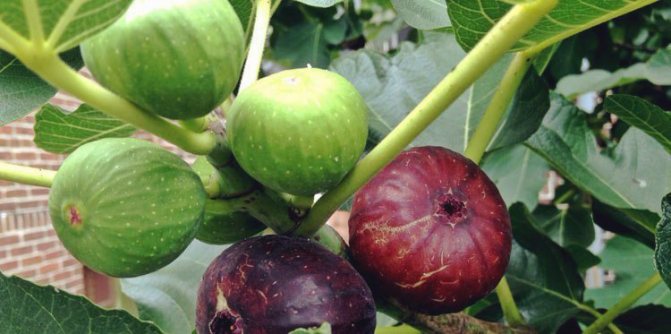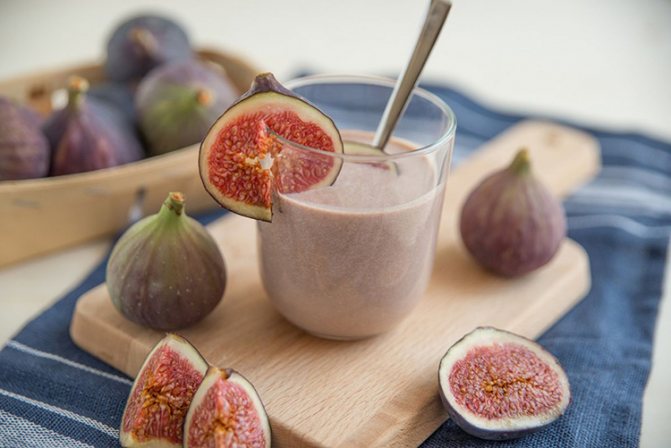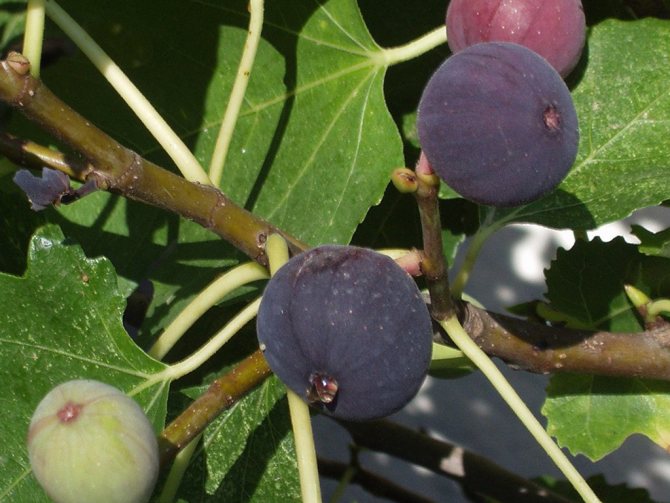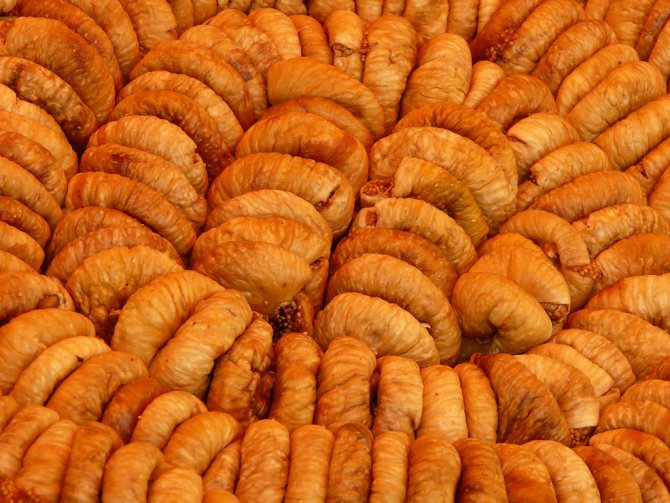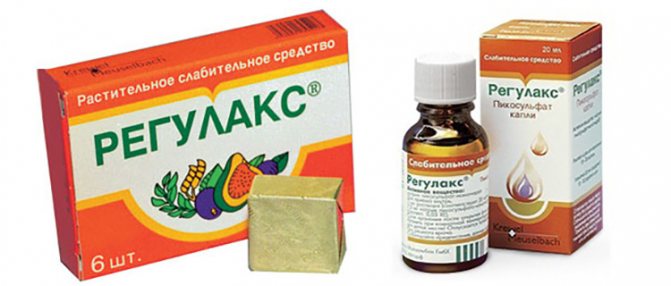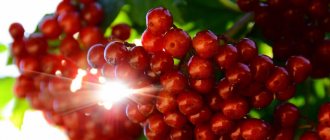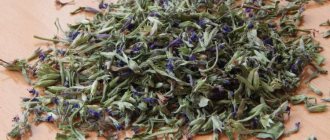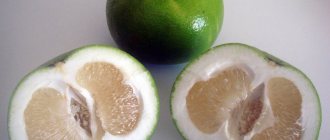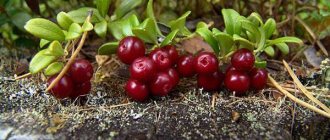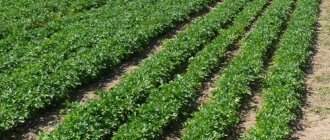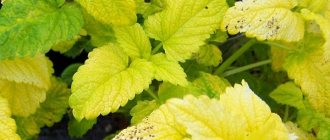Fig - tropical plant with a unique healing composition. In different regions, it is also known as fig, fig tree, fig, fig tree, wine berry. Figs were especially popular in ancient times. If you believe the interpretations of the Bible, then it was with his sheets that Adam and Eve covered the intimate places. And in Greece they say that if a fig tree grows in the yard, then the family does not starve. Its fruits were considered so nutritious that the dried figs were necessarily taken with them by travelers to long journey... Many have heard about this culture, but few know about its beneficial properties.
Figs - the fruit that replaces the pharmacy
Probably, figs can be considered a favorite of God, since he did not stint when creating this plant to endow all its parts with unique properties. You can start with the fact that the leaves of this exotic tree were the prototype of modern thongs. In folk medicine, they are used as an emergency and effective aid:
- for the skin in the treatment of abscesses,
- burns,
- dermatitis,
- as well as the milky juice of leaves or unripe fruits painlessly relieve such a misfortune as warts,
- and mixed with honey healed cataracts and trachoma.
And if modern medicine was able to oppose more effective methods to such methods of healing vision, then the use of other beneficial properties of the fig tree is given full approval. In special cases, with the bites of poisonous insects, in particular a tarantula, even the ashes of the branches of this legendary tree are used.

The wars of Alexander the Great on campaigns always took the fruits of figs. He restored their strength after hard battles.
General rules for caring for figs
Like all plants, figs need proper care. Subject to all requirements, the fig tree will delight with its useful fruits for more than one year. The main rules of care:
- figs that are grown in a pot, needs a regular transplant (Once a year);
- a plant planted or in a pot in a well-lit place gives more fruit yield;
- in the fall, the fig tree needs rest, for this it is placed in a cool place for 2-3 months and watering is stopped (usually, in such conditions, the figs drop their foliage);
- both in the house and on the plot, figs need to be fed with fertilizers: nitrogen fertilizers are applied in spring, phosphate fertilizers in summer, potash fertilizers in autumn;
- the plant needs pruning and crown formation;
- an important component of care - prevention and control of diseases and pests.
Elixir of beauty and femininity
But the main wealth of taste and medicinal properties is concentrated, of course, in the fruits of figs. Just listen to how voluptuous and juicy one of his many names sounds - the fig tree. It is not surprising that it contains a whole arsenal of biologically substances, minerals, vitamins that affect the health, appearance and even the sexual state of women.
Since a ripe tender miracle berry is very difficult to transport, then for most consumers it is more available in dried and dried form without losing its value. Therefore, the beneficial properties of dried figs for women should begin to be listed precisely with the presence of folic acid and other vitamins of group B and E.
By the way, most people know about the need for these vitamins in the diet, but without specifics, why. First of all, they prevent the growth of tumors and other mutations, help to overcome depressive conditions, prevent the development of osteoporosis, anemia, damage to the vascular membranes of the circulatory system and the transmission of nerve impulses.
In figs, copper is present in high concentration, which affects the production of sufficient amounts of sex hormones, collagen and elastin in the skin. Therefore, a few grape berries a day, eaten on an empty stomach in the morning, help to resist the menopause, which is destructive for female beauty.
The benefits of dried figs for women are manifested in an improvement in appearance, since the turgor and the level of skin moisture increase, the nails stop exfoliating, and the risk of hair loss decreases.
In addition, due to the physiological characteristics of fertile age, the consumption of several figs per day prevents the development of anemia, levels PMS bursts and reduces pain during menstruation. Due to the fiber and pectin contained in the fruits of the fig tree, intestinal peristalsis increases, and, therefore, constipation, poisoning the body with toxins, disappears.
Benefit and harm
If we talk about the usefulness of figs, then it is not in doubt. Its fruits contain a whole storehouse of vitamins and minerals. Among the first are vitamins A, B1, B2, B3, B6, B9, C, E, K. Trace elements include potassium, calcium, magnesium and phosphorus, the rest are found in smaller quantities. However, the iron content in figs is higher than in apples.
Description of the harm and benefits of the North American ash-leaved maple


For a long time, figs have been used as a cough remedy - this was mentioned by Ibn Sina. In addition, they have antipyretic and diaphoretic properties.
But its use should be treated with caution by some categories of people. For example, due to its high glycemic index, it is contraindicated for diabetics. Fresh fruits contain oxalic acidtherefore they should not be consumed by people who have oxalate stones in their kidneys.
It is best to eat figs in moderation and abstain from them after a heavy meal: they provoke bloating and flatulence. Figs are contraindicated in diseases of the pancreas and stones in the gallbladder. They have choleretic properties and can provoke hepatic colic.
In addition to fruits, fig leaves also have beneficial properties. They contain coumarin, an anticoagulant that prevents blood clots.
Figs in cosmetology
The minerals, vitamins pectin and acids of the fig tree fruit can act not only from the inside, but also from the outside, if a face mask is made from figs. Fresh or dried fruits are taken as a cosmetic base that supplies the skin with the elements necessary to maintain skin youth, and specific ingredients such as egg white, cottage cheese, oils, taking into account its type and problems, can serve as a supplement. Before crushing dried fig berries to a mushy consistency, it is recommended to first soak them in milk or mineral water.
Botanical description
It grows in southern countries and regions - in Egypt, Abkhazia, Uzbekistan, Georgia, on the Crimean peninsula. It is a tall tree up to 13 meters. The foliage is tough, large, palmate-lobed. The fig tree is considered one of the most ancient cultures. People call it wine berry, fig, fig, fig.
Ripe fruits are valuable. In alternative medicine, the leaves and root are used to make medicinal concoctions. The fruit is pear-shaped, with many seeds. There are varieties of different colors. The most common figs are green with a yellow tinge.It is eaten raw, jams and preserves are made. Delicious dried fruits are obtained from black figs. After drying, the berries become lighter in color. White figs taste like black ones.
You cannot eat unripe fruits. Their milky juice, when ingested, causes poisoning. It is used externally to treat acne and remove warts.
Wine of the year for a real man
However, the grape berry is universal and does not divide people by gender in order to have a beneficial effect on the body. The answer to the question of how useful dried figs are for men is simple - it helps them to remain men even at a very old age, has a positive effect on potency. In addition, the fig berry will fight against such a purely male ailment as prostatitis.
But there are areas of health of both sexes for which the use of wine berries will be of real help. The potassium contained in the fetus will protect the heart muscle in case of hypertension. Often, with increased pressure, the body, trying to normalize it, gets rid of fluid by frequent urination, but this important trace element is washed out.
The effect of fruits on the body
For treatment, dried or dried figs are often used. It does not lose its useful properties for a long time during storage. Fresh fruits are available only a few months a year.
Dried
The medicinal properties of dried figs have been known for a long time. It is an effective fortifying, tonic, immunomodulating, anti-cold remedy. Its most common use is in ten cases.
- Digestive problems. Wine berries normalize digestion, remove slags and toxins from the body due to the laxative effect, and alleviate hemorrhoids.
- Colds and SARS. Fig increases immunity, is used for sore throat, cough, fever.
- Diseases of the upper respiratory tract. Promotes the liquefaction and discharge of phlegm. Accelerates recovery in asthma, bronchitis, tracheitis. Eliminates hoarseness with laryngitis.
- Heart diseases. Due to the high content of potassium and magnesium, it improves the functioning of the heart, strengthens it, and lowers the heart rate.
- Anemia. The high concentration of iron in the composition of wine berries contributes to an increase in hemoglobin.
- Inflammatory processes. Has a pronounced anti-inflammatory effect, is used to treat female diseases.
- Nervous system disorders. Fig is considered a mediator of good mood, normalizes the emotional background, stimulates mental activity.
- Parasites. The fruits of the fig tree are used in the complex treatment of helminthic invasions.
- Diseases of the liver. The elimination of toxins and toxins has a beneficial effect on the condition of the liver.
- Hangover. Relieves nausea, relieves dry mouth, relieves headaches.
Fresh
Fresh figs are just as effective. It is used in the treatment of all the diseases listed above. But the fresh fruits of the fig tree also have additional medicinal properties.
- Diseases of the kidneys and bladder. Has a mild diuretic effect, improves kidney function, relieves inflammation.
- Dermatological diseases. The juice of a fresh fig tree is used to wipe the skin with acne, inflammation of the surface tissues.
- Fungus. Fig contains substances that have antifungal effect.
- Rheumatism. Berry compresses relieve pain in rheumatism, arthritis, and other joint diseases.
Fig tree leaves contain furocoumarins, organic acids, essential oil, steroids, tannins, flavonoids. With diarrhea, flatulence, poisoning, colitis, bronchitis, you can brew tea from fig leaves to alleviate the patient's condition.
Figs with cough milk
For colds and sore throats, for several centuries they have resorted to a recipe using the fruits of the fig tree. At home, it will not be difficult to prepare figs with cough milk for children.A simpler and better broth will turn out in the oven, but with a little skill on the stove it will turn out no worse. To do this, washed dried wine berries are placed in warm milk (the fatter, the better) at the rate of one fruit per one and a half glasses and boiled down by about one third over low heat.
So that the milk does not run away and does not burn, than the taste of the medicine will be irretrievably spoiled, you can use a water bath or stir continuously. Then carefully wrap it up, pour it into a thermos or leave it to languish in the oven for at least three hours, but you can overnight. The result is a caramel-colored liquid similar in consistency to syrup, effective as medicine and tasty, despite its usefulness, which is very much appreciated by children. It is better to store the mixture in the refrigerator to avoid souring, and use it in a heated form, half a glass half an hour before meals, 2-3 times a day.
General information
It is a large shrub that grows up to 8-10 meters in length. Its branches are smooth and thick, and the crown is wide. The trunk diameter can reach 18 cm, and the root system - 15 meters (roots go down to 6 meters). Fig leaves large and hard with uneven denticles along the edges. The color of the leaves is from dark green to greenish grayish. They can be 12 cm wide and 15 cm long.
All fig bushes are divided into female and male individuals, which in nature are pollinated by black wasps by blastophages. These insects do an excellent job with their work, of which the main proof is a large harvest. There are minor holes in the inflorescences of the plant, it is through them that pollination occurs.
The fruits are pear-shaped and grow up to 10 cm in length.purple to yellowish green color... The fruit is a kind of fleshy vessel with small scales. The color and size of the fruit depends on the variety. The most common fruit color is dark blue or yellow (yellow-green).
Unripe berries should not be consumed as they contain inedible latex. The number of seeds in a fig depends on the variety, so it can contain up to 16 thousand small and 30 large seeds. If the fig grows in favorable climatic conditions, then it can bear fruit for 200 years. The tree blooms several times a year, but the fruits are formed only in warm weather (from summer to autumn).
The fig tree grows in the wild in warm regions with a humid climate: in the Mediterranean and Asia Minor, in India, Georgia, Iran, Afghanistan, Azerbaijan, Armenia. In Russia, the fig tree can be found in the Caucasus and the Crimean peninsula.
You can fuck, but still be careful
On the other hand, no matter how useful dried figs would be, useful properties and contraindications lie on the individual scales of each person's body. First of all, it is an individual intolerance, expressed in manifestations of allergies. So, due to the presence of salicylates in the berries of the fig tree, their toxic effect is possible when the fruit is consumed in excess.
It is because of this that, when asked whether it is possible for a nursing mother to dried figs, since it increases lactation, makes breast milk more nutritious and enriches it with calcium, you can answer that you can, but introduce it into your diet gradually and carefully. And the laxative effect, which is transmitted through the milk of the mother to the baby, can upset a small, inexperienced tummy.
Probably, there is no product on earth, including dried figs, the benefits and harms to the body of which would be determined unambiguously, because the main criterion is the dosage. Even the abundance of fructose and glucose in a product can play a cruel joke with those who want to improve their health in a short time.
A few fruits, thanks to their calorie content, can relieve hunger for a long time, but if you forget about the sense of proportion because of the pleasant taste, you can add a few unwanted pounds and raise your blood sugar level. Considering a fig as a dietary product, one may ask the question: "How many calories are in dried figs?" With its 257, it clearly lags behind the common sweets of honey and chocolate with 320 and 540 kilocalories, respectively.
Useful properties of dried figs


Dried fruit has a lot of fiber, the beneficial properties of which are necessary for the normal functioning of the gastrointestinal tract. Its caloric content is 214 kcal / 100 g. One dried fig provides 2 g of fiber, which is 20% of the daily value. In terms of its composition, the amount of dietary fiber, it occupies an honorable first place, helping to work the gastrointestinal tract.
The high pectin content makes dried figs the most useful product. It speeds up the healing of connective tissue after bone or joint injuries. Fruits are rich in calcium, which is one of the most important components for strengthening bones, reducing the risk of osteoporosis.
Dried figs contain up to 70% sugar. Interestingly, people who want to lose weight are advised to consume figs daily. However, the high calorie content it contains can lead to weight gain, especially when consumed with milk. A few are enough to get the recommended amount of nutrients, so don't overdo it!
Dried figs contain phenol, omega-3, omega-6 fatty acids. These fatty acids reduce the risk of coronary heart disease. In addition, the beneficial substances that fig leaves contain have a significant effect on the level of triglycerides in the human body, which are one of the main reasons for the development of various heart diseases. These fatty acids are not produced by our body - we must get them from food. They are needed for the normal functioning of the cardiovascular and nervous systems.
Composition of fresh and dried figs per 100 grams


Due to the high content of glucose and fructose, figs keep themselves sugar-free. This explains the white bloom on dried fruits. If we consider the option that this fruit will be bought in an oriental bazaar, bypassing a series of second-hand dealers, then, provided it is properly stored in a “breathing” container, for example, in canvas bags, in a cool, ventilated place, away from sunlight, then it can delight with its taste in throughout the year until the next harvest. If all its vicissitudes of getting on the counter are not known for certain, the shelf life of dry figs should be halved.
Summing up, I would like to note the benefits of figs for our body. For the first time, fresh, I tried it a year ago, and was in love with it, very tasty, nutritious. One drawback is not kept fresh for long, it is advisable to eat it within 7-8 hours after being plucked. But dried can be eaten for a whole year.
Fig tree cultivation
Of course, figs are cultivated much less frequently than mandarin, lemon or pomegranate. When growing figs, some of its growth and fruiting features should be taken into account. it the plant is considered cold-resistant, some varieties are able to withstand even temperatures of -20 degrees.
Growing in an apartment
Even a novice gardener will be able to grow this useful plant at home. Cultivation is carried out in two ways:
- Seeds... This method is available to everyone, since fig seeds can be obtained from any fruit purchased in the store (even from dry). Before sowing, the planting material is washed, disinfected in a solution of potassium permanganate and dried. You can buy potting soil, or you can cook yourself from sand and sheet soil. Seeds are sown to a depth of 2-2.5 cm, carefully watered and covered with a film. The container with the planted seeds is removed in a warm place, where there are no directed rays of the Sun. Seedlings appear in 3 weeks. After the appearance of two true leaves, the seedlings are transplanted into pots. The first fruits are usually formed after 5 years.
- Cuttings... This method is considered beneficial, since the first fruits grow the next year. Planting material is harvested in the fall, and planted in the spring.The ends of the cuttings are kept in water for 2-4 hours before planting. Then cuts are made in several places and planted in the soil (the mixture is the same as for planting seeds), watered and covered with a jar. The appearance of young leaves indicates the rooting of the cuttings.
Outdoor cultivation
The fig tree can grow not only in the southern regions, but it is also successfully cultivated in the northern regions of the country. But growing in these cold regions presents some challenges.
In the ground should be planted seedlings already with roots... Preparing cuttings is not difficult. To do this, they are first immersed in water with honey, such a solution helps in the formation of roots. After that, the prepared cuttings are planted in a container. It is most convenient to land in plastic bottles. You need to cut off half of the bottle, fill it with soil and place the stalk. The soil around it is watered (the soil must always be moist). These makeshift containers are placed in a bright place where there is no direct sunlight. Through the transparent plastic, it is easy to see whether the stalk is rooted or not. As soon as the first leaves appear, the seedling is planted in the ground along with a lump of earth.
In open ground, seedlings are planted in a sunny and windless place, where trenches or pits were previously prepared. The bottom of the pit must be covered with a layer of drainage. Fig tree branches quickly... As they grow, they should be tilted to the ground and attached. This is done so that the figs do not grow in height, but spread over the surface of the earth.
It is better to cover the fig tree for the winter. To do this, cover the plant with a layer of mulch from branches (some cover it with a blanket), then cover it with polyethylene on top and sprinkle it with a small layer of earth. In the spring, when the frost recedes, the shelter is removed.
How to dry and store
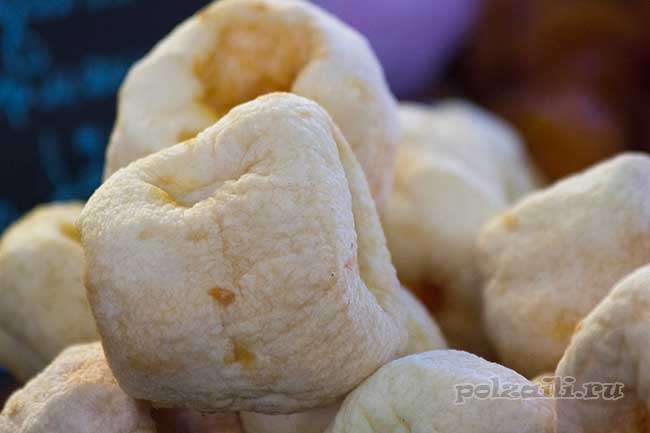

The norm of dried figs - no more than 50 g per day
To dry the fruit of a wine berry, you must:
- Rinse the figs and pat dry on paper or towel. Cutting the fruit into halves will dry out faster.
- Place the fig on a wire rack in a sunny and well-ventilated place.
- Close under gauze from insects.
- After 4-6 days the drying process is over.
You can also use an oven or home dryer.
It will not work to store freshly picked figs for a long time, after a day it will start to deteriorate. The best place to store fresh fruit is in the fruit compartment in the refrigerator. If the temperature in it does not rise above 1 degree, it will be possible to keep the product for 1-2 weeks.
It is optimal to store dried fruits at low temperature and humidity and in the absence of direct sunlight. It is best to pack them in jars or containers and place them in the refrigerator with a lid on. Care must be taken to ensure that no mold builds up on the food, so check the figs once a week. The shelf life of dried fruits is 6 months. In the refrigerating chamber, it increases to 1 year. True, when defrosting, the figs will lose some of their beneficial qualities.
Culinary recipes
In any form, the fig tree fruit is considered an exquisite delicacy. They can be added to various dishes (salads, cereals, desserts), made sweets, compotes and jams, served as a garnish for meat and poultry. The most popular varieties: white figs (Turkish), Brunswik, Black Prince, Randino, etc.


jam with figs will be a good support for the immune system in winter
Compote and jam
Fresh fruit compote has a sweet pleasant taste and contains many vitamins. To prepare it you will need:
- 0.5 kg. fruits (choose unripe);
- 1.5 l. water;
- 150 g of sugar;
- 5 g citric acid.
For cooking, you need to cut the stalks and rinse the fruits in warm water, put the fruits in a saucepan and add cold water so that it covers them by 5 cm.Put on the fire, bring to a boil and cook for 5 minutes.Then remove the water, re-pour the fruit with cold water and put in a cool dark place for 5 hours.
After soaking, pour out the water, and put the fruits in pre-sterilized jars at 1/3 of the height. To prepare the syrup, 1 liter is taken. water, to which sugar and citric acid are added. Bring the solution to a boil and pour into jars with fruit, roll up with a tin wrench.


fruit of purple figs are ideal for making jam
Fig jam with lemon is made from the following ingredients:
- 1 kg. fig fruits of green or purple color;
- 2 small lemons with thin skin;
- 600 g of sugar;
- 4 clove buds;
- 2 tsp balsamic vinegar.
Before cooking, cut off the tails, cut the bases with a cross to a depth of 5-6 mm, stick the clove buds inside. Wash the lemons and cut into thin slices, keep the juice. Mix 100 ml lemon juice in a large container with a thick bottom. water and vinegar, add sugar and lemons. Put the container over medium heat and, bringing to a boil, remove the foam. Cook for another 10 minutes.
Then add fig fruits, stir, bring to a boil and simmer for 3 minutes over low heat. Set aside and cool for 3 hours. Repeat boiling and cooling 3 times. Arrange the finished jam in sterile jars and close.
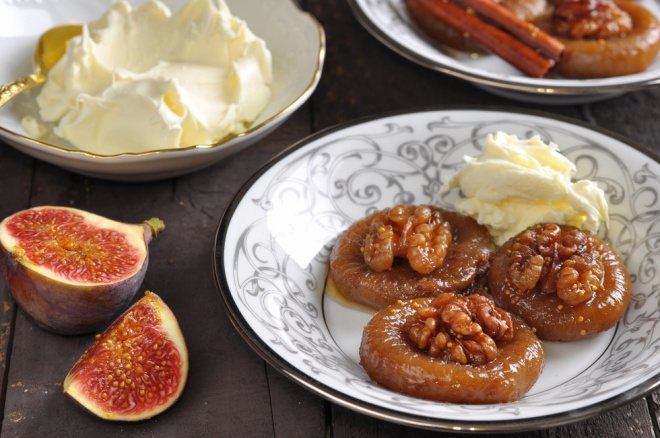

figs are used in cooking to enrich and diversify food
How many figs can you eat per day
Specialists' recommendations on how much and how to eat figs correctly depend on the state of the human body and the presence of chronic diseases. For healthy people, eating 4-5 fruits daily will be beneficial and safe. However, one should take into account the high calorie content and high fiber content in fruits, which requires restrictions in the presence of stomach diseases.
Information about the substances that figs contain, the benefits and harms for the body of children and adults will help those who prefer to use folk recipes for treatment.
The benefits of figs for the human body
Figs are of particular benefit to the respiratory system; heart and blood vessels, digestive system.
Respiratory system
For colds and coughs, it is necessary to prepare a decoction in milk. The therapeutic course is 2 weeks. This medicine eliminates coughing attacks, relieves fever and increases the resistance of the immune system to infectious diseases.
It is prepared and taken as follows:
- You should take 300 ml of high-quality cow's milk (preferably fat) and heat it up in an enamel bowl.
- Place 4 medium figs in a saucepan with milk and bring to a boil. Both fresh and dry fruits are used.
- Then you need to cover the pan with a lid and keep the composition for half an hour over low heat. In this case, the volume of the liquid will decrease by three times.
- Next, the dishes are wrapped and left to cool completely. After 3-4 hours, the broth is ready.
- They drink it in the morning, at lunchtime and in the evening for half a glass before eating.
- Store the medicine in a closed jar in the refrigerator. Every day you need to prepare a new broth.
This broth softens the throat and relieves coughs for bronchitis, tracheitis and colds.
The cardiovascular system
The minerals (magnesium, potassium) that make up figs are the building blocks of muscle tissue. They support heart function and eliminate many pathologies associated with the functioning of blood vessels. Ficin allows you to thin the blood, lowers the level of bad cholesterol, and reduces the risk of blood clots.
To strengthen the cardiovascular system, it is advised to drink wine infusion.
It is prepared and taken as follows:
- It is necessary to pour 50 g of dried fruits with a glass of warm water.
- After 6 hours, the berries will give all their nutrients to the liquid.
- This infusion should be drunk during the day in small portions before meals.
- The course of treatment is 10-12 days. Berries can not be thrown away, but eaten.
Such a medicine will reduce the risk of developing atherosclerosis, thrombosis and tachycardia.
Treatment of gastrointestinal diseases with figs
The fruits, especially when dried, are very beneficial for the functioning of the digestive organs. In case of poisoning, thanks to the enzymes present in it, the fig removes poisons and toxins from the body, restores the intestinal microflora. The high content of dietary fiber allows the use of fruits to eliminate constipation and improve bowel function.
With intestinal atony, you can use the following recipe.
You need to collect:
- fig fruits - 200 g;
- prunes - 400 g;
- dried apricot - 100 g;
- raisins - 100 g;
- rosehip extract - 100 ml;
- honey - 200 g;
- senna herb - 50 g.
How to prepare and take:
Grind the first four ingredients in a meat grinder, add honey and rose hips, as well as chopped senna herb. Then place the mixture in a container and keep in the refrigerator. Take one spoonful in the morning before breakfast and in the evening before bedtime.
Figs are also used for gastritis. Once in the stomach, it envelops the mucous membrane, protecting it from the irritating effects of incoming food. This makes it possible to reduce the intensity of the inflammatory process taking place inside, and even achieve significant success in the health of the organ.
Figs for diseases of the liver and gallbladder
Figs are an excellent hematopoietic agent. Therefore, its use is appropriate for liver diseases. To improve liver function, traditional medicine advises to consume fig milk. It should be prepared in this way. Insist or boil a little 50 grams of figs in a glass of hot milk for at least five hours. When everything is cool, grind in a blender and drink.
With dyskinesia of the bile ducts, stone formation in them, cholecystitis, the following treatment is applied.
You need to prepare a mixture of these components:
- figs -1.2 kg;
- lemons - 0.5 kg;
- granulated sugar - 0.5 kg;
- honey - 7st. spoons.
Prepare and take like this:
Peel the lemons and grind together with the peel in a meat grinder. Process figs in the same way. Mix all ingredients. Take the medicine before meals for 2-4 tbsp. spoons.



